Terminology
Before going directly into the ANS let’s briefly discuss the basic terminology we use within this tutorial.
Neuron
In a simple way, it is the basic structural unit of nervous system. It conducts the impulses throughout the body at a rapid rate playing a significant role in signalling.
Illustration: Imagine a nervous system as a supply of electricity through electrical wires. Here brain is the mains of the supply and neurons are the electrical wires. Ganglia are junction boxes that form a connection between two neurons. Receptor is nothing but electrical socket. This socket can be controlled by a switch acting as gating mechanism.
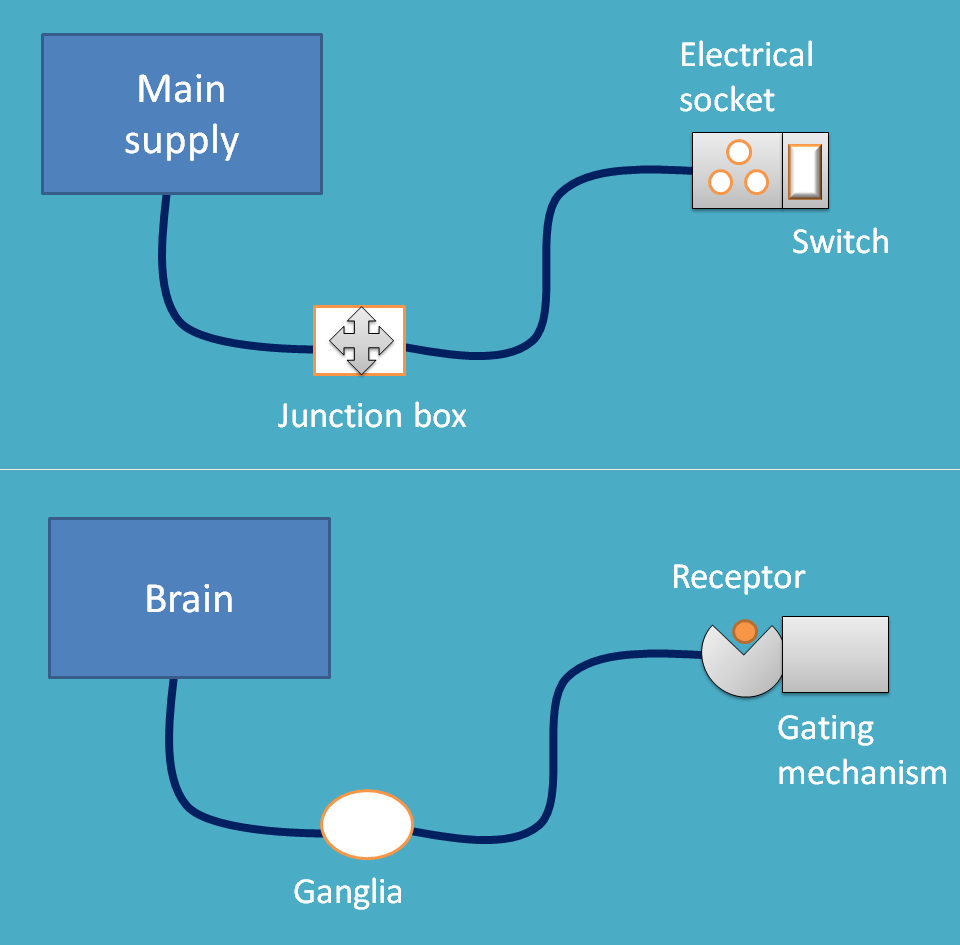
Neuron mainly consists of three parts viz.
- cell body
- dendrites
- axon
Cell body
Cell body is the main part of the neuron containing nucleus and responsible for all the functional activities of neuronal cell. In autonomic nervous system, the cell bodies of preganglionic neurons emerge from various segments of the spinal cord.
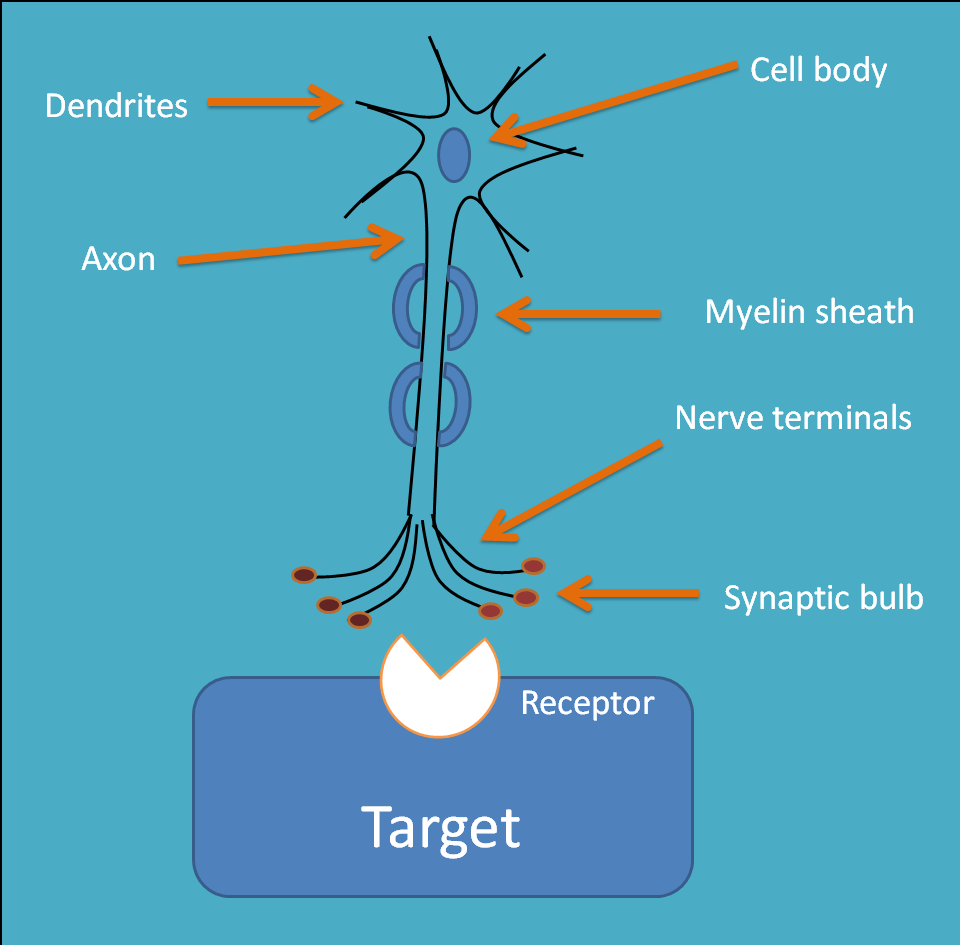
Dendrites
Dendrites are microstructures many in number that bring signals to the cell body. They can interact with dendrites of other neurons and propagate impulse from one neuron to another neuron.
Axon
Axon is a long extension from the cell body with or without myelin sheath. When axon is coated with myelin (myelinated) that are called as nerve fibers. These nerve fibers are fast conducting than unmyelinated neurons. Axons finally end with multiple branches called nerve terminals which release a chemical mediator called neurotransmitter. These neurotransmitters act on target organ to produce motor response.
Synapse
It is the junction between a neuron and target the later may be either a neuron, muscle or gland.
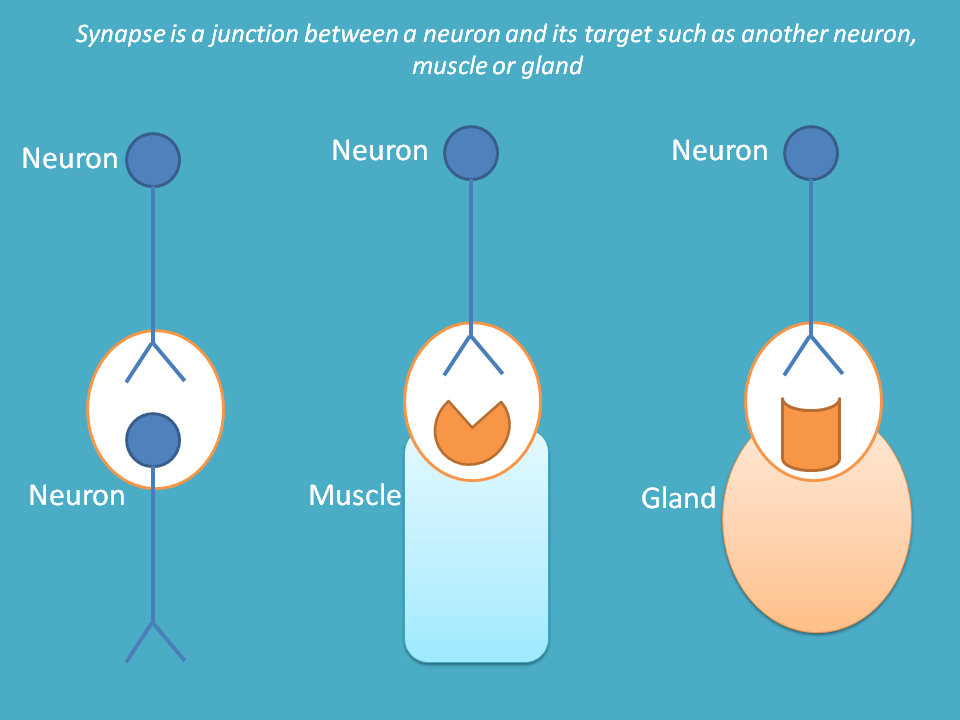
The impulses from cell body of the neuron are transmitted through axon to the nerve terminals where it interacts with its target through the junction synapse.
The receptors existing before the synapse are called as presynaptic, while those exist after the synapse on the target organ are called as postsynaptic receptors.
Synaptic cleft
It is the gap between nerve terminal and its target where target may either a neuron, muscle or a gland
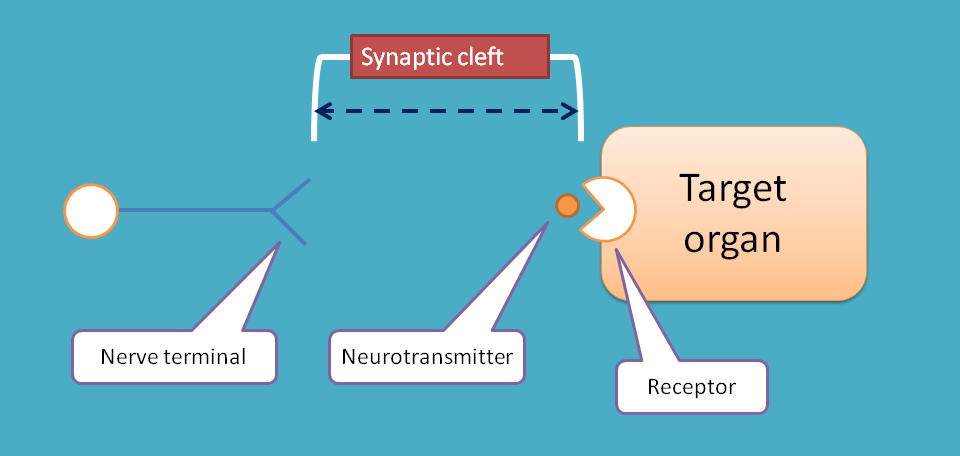
Ganglia
It is a group of cell bodies that form a junction with nerve terminals of other neurons and responsible for chemical transmission between those neurons. In ANS, these are located outside the CNS.

Ganglia and synapse: What is the difference?
Even both terms indicate a junction where chemical signalling carries the information in the form of neurotransmitters, a little difference exists. Synapse is a junction between a neuron and its target. The target may be neuron, muscle or gland. So, ganglia is one type of synapse that forms between two neurons
Those fibres emerging from the spinal cord and exist before ganglia are called as preganglionic fibres, while those from the ganglion to the effector organ are called postganglionic fibres whereas the fibers that exist after the ganglia and form a synapse at target organ are called as post ganglionic fibers.
Don’t confuse the terms presynaptic and postsynaptic with preganglionic and postganglionic.
- Presynaptic – Exist before the synapse
- Postsynaptic – Exist after the synapse
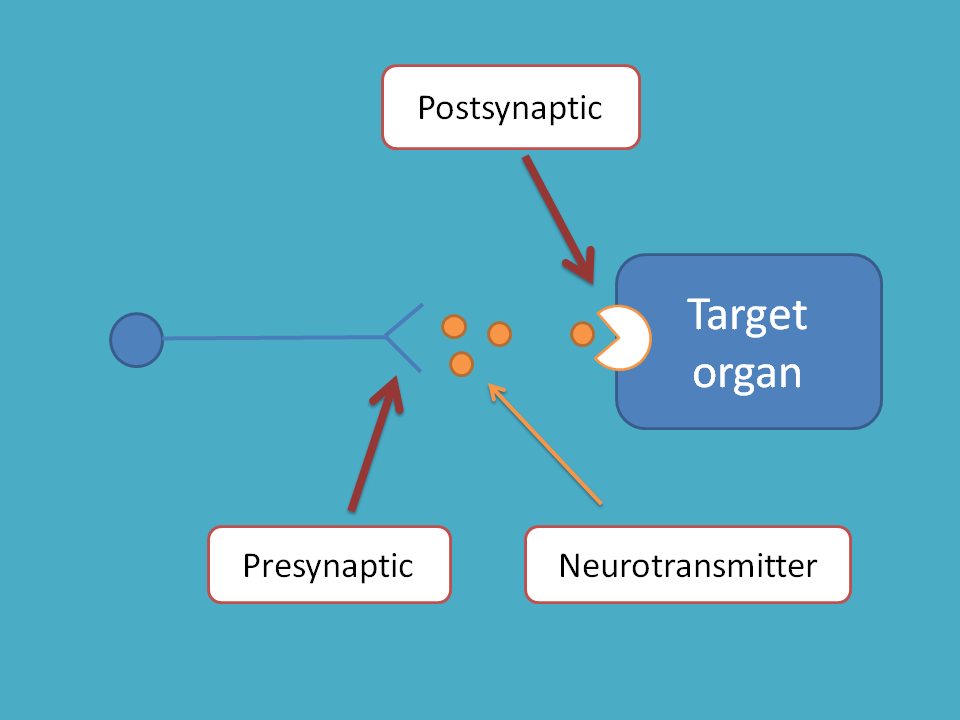
Eg : Presynaptic receptors – those receptors that exist before the synapse, generally on the nerve terminal.
Postsynaptic receptors – those receptors that exist after the synapse, generally on the effector organ such as muscle or gland.